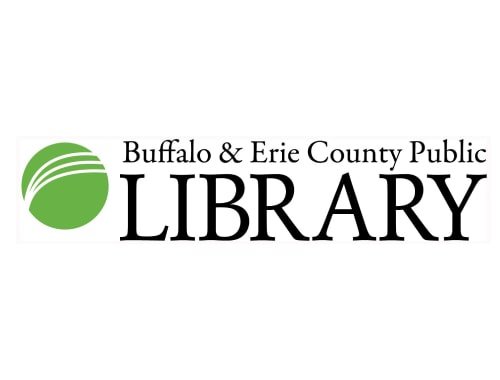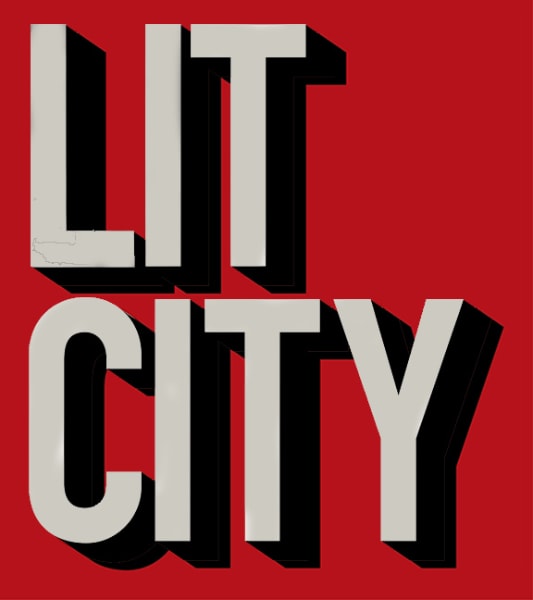
On June 7, 2016, Mayor Byron Brown designated Washington Street, beginning at Lafayette Square and continuing past Just Buffalo Literary Center and the Western New York Book Arts Center to the dig Innovation Center hub at Virginia Street, as The Literary Corridor of Buffalo.
“The City of Buffalo has an extraordinary literary history and legacy, is home to one of the country’s top literary centers, and has an active and growing literary community.”
—Mayor Byron Brown
We invite everyone to come see the LIT CITY banners in person, and visit any of the literary destinations along Washington Street.
LIT CITY Writers
Learn more about the impressive poets, novelists, and playwrights represented in the LIT CITY banners.
Lauren Belfer | Novelist | City of Light
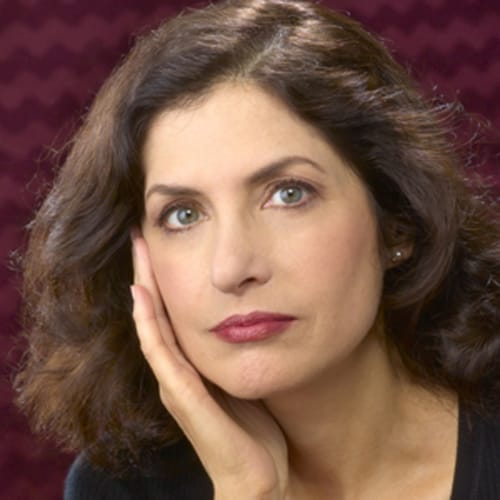
LAUREN BELFER was born in Rochester, New York, and grew up in Buffalo, where she attended Buffalo Seminary.
Her debut novel, City of Light, which is set in Buffalo at the time of the Pan-American exposition, was a New York Times bestseller, as well as a New York Times Notable Book, a Library Journal Best Book, and a Main Selection of the Book-of-the-Month Club. City of Light was a bestseller in Great Britain and has been translated into six languages.
Her second novel, A Fierce Radiance, was named a Washington Post Best Novel of 2010 and an NPR Best Mystery of 2010. Her third novel, And After the Fire, received a 2016 National Jewish Book Award.
She lives in New York City.
About City of Light
The year is 1901. Buffalo, New York, is poised for glory. With its booming industry and newly electrified streets, Buffalo is a model for the century just beginning.
Louisa Barrett has made this dazzling city her home. Headmistress of Buffalo’s most prestigious school, Louisa is at ease in a world of men, protected by the titans of her city. But nothing prepares her for a startling discovery: evidence of a murder tied to the city’s cathedral-like power plant at nearby Niagara Falls. This shocking crime–followed by another mysterious death–will ignite an explosive chain of events. For in this city of seething intrigue and dazzling progress, a battle rages among politicians, power brokers, and industrialists for control of Niagara. And one extraordinary woman in their midst must protect a dark secret that implicates them all.
William Wells Brown | Activist, Novelist, Playwright | Clotel
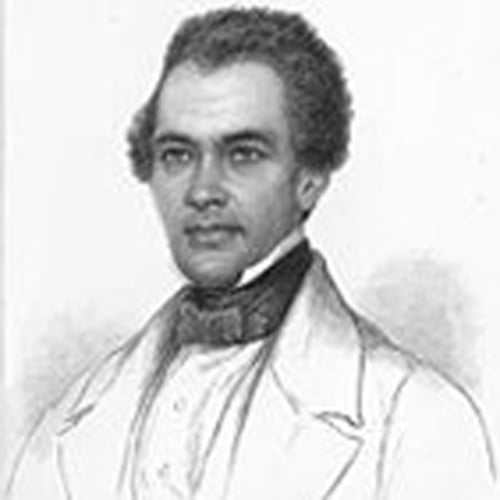
WILLIAM WELLS BROWN was an African American antislavery lecturer, groundbreaking novelist, playwright and historian. He is widely considered to have been the first African American to publish works in several major literary genres. Known for his continuous political activism especially in his involvement with the anti-slavery movement, Brown is widely acclaimed for the effectiveness of many of his writings.
Brown was born to a white father and enslaved mother on a plantation outside of Lexington, Kentucky, most likely in 1814. He spent his childhood and much of his young adult life as a slave in St. Louis, Missouri working a variety of trades. Brown slipped away from his owner’s steamboat while it was docked in Cincinnati, Ohio and thereafter declared himself a free man on New Year’s Day 1834. Shortly thereafter he was taken in and helped to safety by Mr. and Mrs. Wells Brown, a white Quaker family. William would adopt their names in respect for the help they provided him.
William Wells Brown settled briefly in Cleveland, Ohio where he married a free African American woman. They had two daughters. Later Brown moved his family to Buffalo, New York where he spent nine years working both as a steamboat worker on Lake Erie and a conductor for the Underground Railroad.
By 1843 Brown was lecturing regularly on his experiences in slavery for the Western New York Anti-Slavery Society. By that time he also became deeply committed to lecturing on behalf of women’s rights and temperance laws. It was this involvement as a prominent speaker that many historians and scholars suggest provided the trajectory for his later career as a writer. By 1845, in the wake of the tremendous success of Frederick Douglass’s narrative autobiography, Brown published his own Narrative of William W. Brown, a Fugitive Slave, Written by Himself. The resounding success of his narrative led Brown to travel across Europe between 1849 and 1854 where he delivered more than a thousand speeches. He also wrote two additional books. Three Years in Europe, published in 1852, was the first travel book ever to be written by an African American while Clotel, which appeared a year later, is one of the earliest novels written by an African American and the first to be published by a British publishing house. In 1858 his play The Escape became the first play ever to be published by an African American.
About Clotel: or, The President’s Daughter
First published in December 1853, Clotel was written amid then unconfirmed rumors that Thomas Jefferson had fathered children with one of his slaves. The story begins with the auction of his mistress, here called Currer, and their two daughters, Clotel and Althesa. The Virginian who buys Clotel falls in love with her, gets her pregnant, seems to promise marriage—then sells her. Escaping from the slave dealer, Clotel returns to Virginia disguised as a white man in order to rescue her daughter, Mary, a slave in her father’s house. A fast-paced and harrowing tale of slavery and freedom, of the hypocrisies of a nation founded on democratic principles, Clotel is more than a sensationalist novel. It is a founding text of the African American novelistic tradition, a brilliantly composed and richly detailed exploration of human relations in a new world in which race is a cultural construct.
Lucille Clifton | Poet, Author | The Collected Poems of Lucille Clifton (1965-2010)
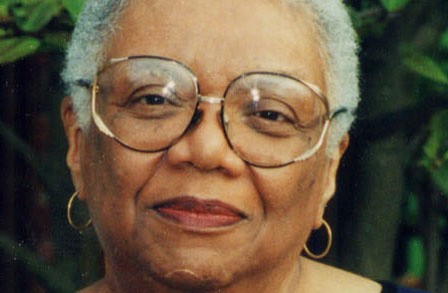
LUCILLE CLIFTON remains one of the most important African-American writers of the 20th century. Born in Depew, New York in 1936, Clifton grew up on Purdy Street on Buffalo’s East Side and graduated from Fosdick-Masten Park High School (now City Honors). After college, she returned to Buffalo where she married Fred Clifton (a professor at the University at Buffalo) and gave birth to their six children.
In her lifetime, Clifton published 14 books of poetry, a memoir (edited by Toni Morrison), as well as 18 books for children. Her numerous awards include three Pulitzer Prize nominations, an Emmy Award (for her work on Free to Be You and Me), NEA fellowships, a Coretta Scott King Award, the National Book Award, and the first African-American woman ever to receive the Ruth Lilly Poetry Prize for lifetime achievement.
Though Clifton spent the greater part of the first 30 years of her life in Buffalo, very few Western New Yorkers are aware that this historically significant figure has any ties to this region. Just Buffalo Literary Center has been in touch with the Clifton estate who are fully supportive of any efforts to honor Clifton’s life and legacy here in Buffalo.
- Learn more at the National Poetry Foundation
- See the sculpture “Spirit of Inspiration” dedicated to Lucille Clifton
About The Collected Poems of Lucille Clifton (1965-2010)
“From the earliest poems collected here, we see the familial merged seamlessly with the political, the general woven with the homespun. All poetry readers will want to own this book; almost everything is in it.”
—Publisher’s Weekly
Landmark volume containing all of Lucille Clifton’s published work and 55 previously unpublished poems. Foreword by Nobel Prize-winner Toni Morrison.
Robert Creeley | Poet | Selected Poems (1945-2005)
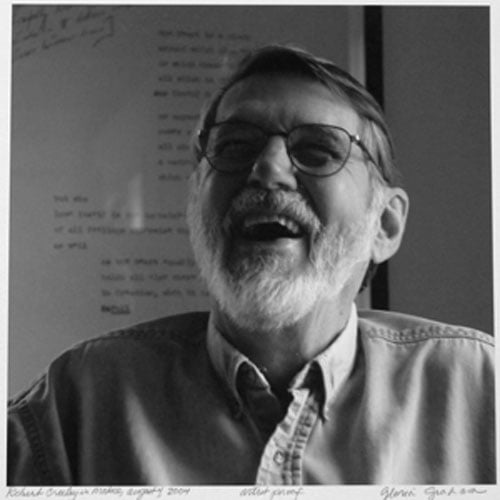
ROBERT CREELEY is widely recognized as one of the most important and influential American poets of the twentieth century. Most often associated with the Black Mountain School, Creeley offered a bridge between the modernist poets of the early 20th century and the many generations who came after him.
Creeley joined the faculty at the University at Buffalo at the invitation of Charles Olson in the 1970s when SUNY-Buffalo’s English department had already defined itself as a bastion for writers and artists. Creeley increased the UB English department’s visibility in founding the Poetics Program with Charles Bernstein, Susan Howe, Raymond Federman, and Dennis Tedlock.
His contributions to the wider WNY community are incalculable. Though never officially named Buffalo’s Poet Laureate, Creeley was a defining voice in the Buffalo writing community for nearly forty years. In fact, one could easily say that Just Buffalo Literary Center would not exist were it not for Robert Creeley’s poetry.
“Love Comes Quietly”
Love comes quietly,
finally, drops
about me, on me,
in the old ways.
What did I know
thinking myself
able to go
alone all the way.
When Just Buffalo Literary Center’s founder, Debora Ott, first heard this poem as a teenager in New York City, it inspired her to come to the University at Buffalo to study with its author, Robert Creeley. UB’s English Department was legendary, attracting incredible poets and writers to both its faculty and its student body. Just Buffalo created a new niche, inviting writers out of academia and into the heart of the community.
Born in Arlington, Massachusetts, in 1926, Creeley published over ninety collections of poems in his lifetime in addition to dozens more edited collections, works of nonfiction & prose.
Learn more about Creeley’s life & work at the National Poetry Foundation
Read Charles Bernstein’s moving remembrance of Creeley
About Selected Poems (1945-2005)
Selected Poems offers for the first time a balanced survey of Robert Creeley’s entire sixty years of poetic accomplishment. It showcases the works that made him one of the most beloved and significant writers of the past century while inviting a new recognition of his enduring commitments, fluency, and power.
Carl Dennis | Poet | Practical Gods
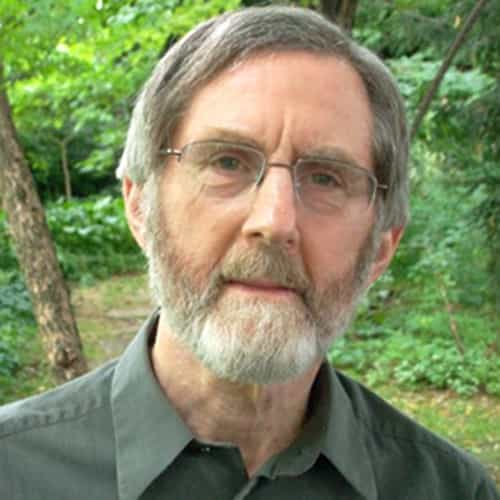
CARL DENNIS was born on September 17, 1939, in St. Louis, Missouri, and attended both Oberlin College and the University of Chicago before completing his bachelor’s degree at the University of Minnesota. He earned his PhD from the University of California, Berkeley.
Dennis has published twelve books of poetry, including Another Reason (Penguin, 2014); Callings (Penguin, 2010); Practical Gods (Penguin, 2001), for which he won the Pulitzer Prize for Poetry; and Meetings with Time (Penguin, 1992), among others. Dennis has also published a book of criticism, Poetry as Persuasion (University of Georgia Press, 2001).
Known for its casual, plainspoken narrative style that makes its home in the everyday life of the American middle class, Dennis’s poetry is a quiet, almost intimate, meditation on the world around him. In a review of Dennis’s poems in The Washington Post, poet Robert Pinsky wrote, “The musing mind or voice reaches its object not with a turbulent roar of rhetoric, but with the penetration of fine oil. The poems of Carl Dennis proceed to startling, sometimes even upsetting conclusions by that musing process of mind, alert and patient.”
Dennis has received several honors and distinctions, including fellowships from the Guggenheim Foundation and the National Endowment for the Arts as well as the 2000 Ruth Lilly Poetry Prize.
Dennis taught at the University of Buffalo from 1966 to 2001, after which time he served as the school’s artist in residence. He also taught in the MFA program in creative writing at Warren Wilson College.
He lives in Buffalo, New York.
Learn more at the Academy of American Poets
About Practical Gods
Practical Gods is the eighth collection by Carl Dennis, a critically acclaimed poet and recent winner of one of the most prestigious poetry awards, the Ruth Lilly Prize. Carl Dennis has won acclaim for “wise, original, and often deeply moving” poems that “ease the reader out of accustomed modes of seeing and perceiving” (The New York Times). Many of the poems in this new book involve an attempt to enter into dialogue with pagan and biblical perspectives, to throw light on ordinary experience through metaphor borrowed from religious myth and to translate religious myth into secular terms. While making no claims to put us in touch with some ultimate reality, these clear, precise, sensitive poems help us to pay homage to the everyday household gods that are easy to ignore, the gods that sustain life and make it rewarding.
Marian de Forest | Playwright, Journalist, Civic Leader | Little Women stage adaptation (1864-1935)
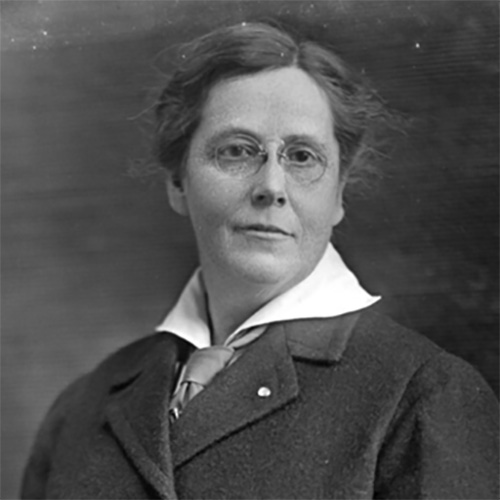
MARIAN DE FOREST was a playwright, journalist and civic leader who is perhaps best known for her stage adaptation of Louisa May Alcott’s beloved classic, Little Women.
Born in Buffalo February 29, 1864, de Forest graduated from Buffalo Seminary and went on to begin her career as a reporter—one of the first women journalists in Western New York. Working as a drama critic and editor of the women’s department at The Buffalo Express for 20 years, de Forest was a secretary of the Board of Women Managers for the Pan American Exposition in 1901 and was instrumental in forming the Buffalo Philharmonic Orchestra.
In 1919, de Forest founded Zonta, a service organization with the mission of Building a Better World for Women and Girls in Buffalo. It went on to become Zonta International with chapters all over the world.
Recognized internationally as a playwright, Marian de Forest was inducted into the prestigious writers club,The Lyceum of London; she is listed in Notable Women in American Theater and Who’s Who in America.In 2001, she became the first woman from Buffalo to be inducted into the National Women’s Hall of Fame.
Learn more about Marian de Forest at WNY Heritage
Alexis de Veaux | Poet, Novelist | Yabo
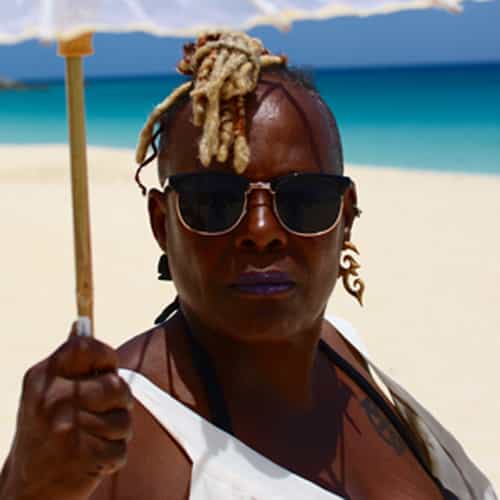
ALEXIS DE VEAUX was born and raised in Harlem, the product of two merging streams of black history in New York City—immigrants from the Caribbean on her mother’s side and migrants from North Carolina on her father’s side—who settled in Harlem in the early decades of the Twentieth Century. The second of eight children, that history was embedded in her mother’s view of life: “You got three strikes against you. You poor, you black, and you female.” But Alexis was drawn to the world of words and books, and literature soon became the means by which she re-imagined the world her mother understood.
The social movements of the 1960s, and the black writers associated with them, had a determining impact. Alexis began to envision the possibilities of living as a writer. In the early 1970s she joined the writer’s workshop of the Frederick Douglass Creative Arts Center in Harlem. The workshop was run by the late writer Fred Hudson. Under his guidance she won first place in a national black fiction writers’ contest (1972); published her first children’s book,Na-ni (1973); and the fictionalized memoir, Spirits in the Street (1973). By the end of the 1970s, Alexis’s reputation as a writer bridged multiple genres: fiction, children’s literature, playwriting and poetry.
In the ensuing decades, the tensions between the Black Arts Movement, an emerging black feminist movement, and, later, the Third World Gay and Lesbian Liberation Movement, were the backdrop for Alexis’s writing. Her work began to be defined by two critical concerns: making the racial and sexual experiences of black female characters central to her work, and disrupting boundaries between forms. In 1980 she published Don’t Explain, an award-winning biography of jazz great Billie Holiday, written as a prose poem. Her short stories were also exercises in disrupting the lines between poetry and prose. As a freelance writer and contributing editor for Essence Magazine in the 1980s, Alexis penned a number of socially relevant articles, traveling on behalf of the magazine to Zimbabwe, Kenya and Egypt. She was chosen by the magazine to go to South Africa in 1990 to interview Nelson Mandela upon his historic release from prison, making her the first North American writer to do so. As an artist and lecturer she has traveled extensively in the United States, Canada, the Caribbean, Latin America, Japan and Europe. Alexis published a second award-winning children’s book, An Enchanted Hair Tale (1987) before moving to Buffalo, where she finished graduate school, earning a doctorate in American Studies in 1992. A project nearly ten years in the making, her biography of Audre Lorde, Warrior Poet (2004) has been the recipient of several awards, including the Gustavus Meyers Outstanding Book Award (2004), the Lambda Literary Award for Biography (2004), the Hurston/Wright Foundation Legacy Award, Nonfiction (2005). Her work is available in English, Spanish, Dutch, Japanese and Serbo-Croatian.
About Yabo
“See Yabo . . . like a Mingus composition: Pentecostal, blues-inflected, full of wit and that deep literacy of the black diaspora. The present, the past, the uncertain future collapse upon themselves in this narrative of place/s . . . Yabo calls our ghosts back and holds us accountable for memory.”
—Cheryl Clarke, author, Living as a Lesbian and The Days of Good Looks
Raymond Federman | Poet, Novelist, Writer | Double or Nothing
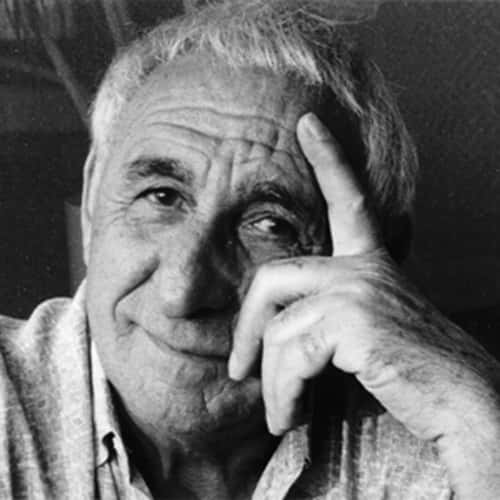
RAYMOND FEDERMAN was a French–American novelist and academic, known also for his poetry, essays, translations, and criticism. He held positions at the University at Buffalo from 1973 to 1999, when he was appointed Distinguished Emeritus Professor.
Born in France in 1928, Federman taught for more than three decades in the English and Comparative Literature departments at the University at Buffalo (1973-1999). Most well-known for his scholarship on Samuel Beckett, he published ten novels, five volumes of poetry, and numerous articles and essays, and his work has been translated into 15 languages, including Hebrew and Japanese.
“Though he was often described as a writer of postmodern fiction, Mr. Federman preferred to call what he did “surfiction,” a term he coined in the 1970s to describe the murky borderland between fiction and nonfiction. Shunning most conventional storytelling techniques, his novels often employ multilayered narratives, shifting perspectives, knowing asides and leavening doses of humor.
Among his other novels are Take It or Leave It: An Exaggerated Second-Hand Tale to Be Read Aloud Either Standing or Sitting (Fiction Collective, 1976); The Twofold Vibration (Indiana University, 1982); and Smiles on Washington Square: A Love Story of Sorts (Thunder’s Mouth, 1985), which received an American Book Award in 1986.
Read more at The New York Times
Visit Federman.com
About Double or Nothing
Double or Nothing is a concrete novel in which the words become physical materials on the page. Federman gives each of these pages a shape or structure, most often a diagram or picture. The words move, cluster, jostle, and collide in a tour de force full of puns, parodies, and imitations. Within these startling and playful structures Federman develops two characters and two narratives. These stories are simultaneous and not chronological. The first deals with the narrator and his effort to make the book itself; the second, the story the narrator intends to tell, presents a young man’s arrival in America. The narrator obsesses over making his narrative to the point of not making it. All of his choices for the story are made and remade. He tallies his accounts and checks his provisions. His questioning and indecision force the reader into another radical sense of the novel. The young man, whose story is to be told, also emerges from his obsessions.
Madly transfixing details noodles, toilet paper, toothpaste, a first subway ride, a sock full of dollars become milestones in a discovery of America. These details, combined with Federman’s feel for the desperation of his characters, create a book that is simultaneously hilarious and frightening. The concrete play of its language, its use of found materials, give the viewer/reader a sense of constant and strange discovery. To turn these pages is to turn the corners of a world of words as full as any novel of literary discourse ever presented. Double or Nothing challenges the way we read fiction and the way we see words, and in the process, gives us back more of our own world and our real dilemmas than we are used to getting.
Leslie Feinberg | Author, Activist | Stone Butch Blues
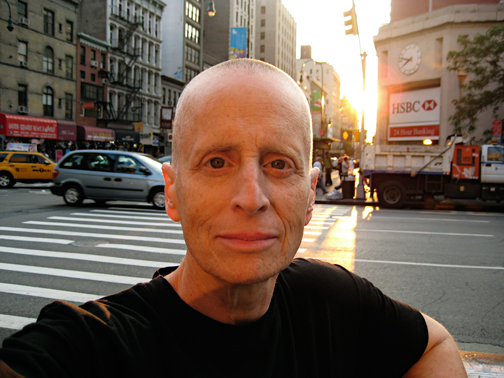
LESLIE FEINBERG, who identified as an anti-racist white, working-class, secular Jewish, transgender, lesbian, female, revolutionary communist, was the first theorist to advance a Marxist concept of “transgender liberation.”
Feinberg preferred to use the pronouns she/zie and her/hir for hirself, but also said:
“I care which pronoun is used, but people have been respectful to me with the wrong pronoun and disrespectful with the right one. It matters whether someone is using the pronoun as a bigot, or if they are trying to demonstrate respect.”
Born September 1, 1949, in Kansas City, Missouri, and raised in Buffalo, New York in a working-class Jewish family, at age 14, Feinberg began supporting hirself by working in the display sign shop of a local department store, and eventually stopped going to high school classes, though officially zie/she received hir diploma. It was during this time that she/zie entered the social life of the Buffalo gay bars. Zie/she moved out of a biological family hostile to hir sexuality and gender expression, and to the end of hir life carried legal documents that made clear they were not hir family.
Discrimination against hir as a transgender person made it impossible for hir to get steady work. Zie/she earned hir living for most of hir life through a series of low-wage temp jobs, including working in a PVC pipe factory and a book bindery, cleaning out ship cargo holds and washing dishes, serving as an ASL interpreter, and doing medical data inputting.
Feinberg was one of the organizers of the 1988 mobilization in Atlanta that drove back the white supremacist Ku Klux Klan as they tried to march down Martin Luther King, Jr. Ave. on MLK Day. When anti-abortion groups descended on Buffalo in 1992 and again in 1998-1999 with the murder there of Dr. Barnett Slepian, Feinberg returned to work with Buffalo United for Choice and its Rainbow Peacekeepers, which organized community self-defense for local LGBTQ+ bars and clubs as well as the women’s clinic.
In 1992, Feinberg met her spouse, the activist and poet Minnie Bruce Pratt, when Leslie presented a slideshow on hir transgender research in Washington, DC. After a long-distance courtship, they made their home for many years in Jersey City, NJ, where, to protect their relationship, the couple domestic-partnered in 2004 and civil-unioned in 2006. They also married in civil ceremony in Massachusetts and in New York State in 2011.
Feinberg is primarily remembered for hir 1993 first novel, Stone Butch Blues, widely considered a groundbreaking work about the complexities of gender. Sold by the hundreds of thousands of copies and also passed from hand-to-hand inside prisons, the novel has been translated into Chinese, Dutch, German, Italian, Slovenian, Turkish, and Hebrew (with her earnings from that edition going to ASWAT Palestinian Gay Women).
From 2004-2008 Feinberg’s writing on the links between socialism and LGBT history, “Lavender & Red,” ran as a 120-part series in Workers World newspaper. Hir last book, Rainbow Solidarity in Defense of Cuba, was an edited selection of that series.
Feinberg authored two other non-fiction books, Transgender Warriors: Making History and Trans Liberation: Beyond Pink or Blue, as well as a second novel, Drag King Dreams.
At the time of hir death, Leslie Feinberg was preparing the 20th anniversary edition of Stone Butch Blues. Zie/she worked up to within a few days of hir death to prepare the edition for free, open access online.
Zie/she died on November 15, 2014 at home in Syracuse, NY, with hir partner and spouse of 22 years, Minnie Bruce Pratt, at hir side. Hir last words were:
“Remember me as a revolutionary communist.”
About Stone Butch Blues
Stone Butch Blues, Leslie Feinberg’s 1993 first novel, is widely considered in and outside the U.S. to be a groundbreaking work about the complexities of gender. Feinberg was the first theorist to advance a Marxist concept of “transgender liberation.” Sold by the hundreds of thousands of copies and also passed from hand-to-hand inside prisons, Stone Butch Blues has been translated into Chinese, Dutch, German, Italian, Slovenian, Turkish, and Hebrew (with hir earnings from that edition going to ASWAT Palestinian Gay Women). The novel was winner of the 1994 American Library Association Stonewall Book Award and a 1994 Lambda Literary Award.
Feinberg commented on Stone Butch Blues in hir Author’s Note to the 2003 edition:
“Like my own life, this novel defies easy classification. If you found Stone Butch Blues in a bookstore or library, what category was it in? Lesbian fiction? Gender studies? Like the germinal novel The Well of Loneliness by Radclyffe/John Hall, this book is a lesbian novel and a transgender novel—making ‘trans’ genre a verb, as well as an adjective… People who have lived very different lives have generously related to me the similarities they recognized in these pages with their own struggles—the taste of bile; the inferno of rage—transsexual men and women, heterosexual cross-dressers and bearded females, intersexual and androgynous people, bi-gender and tri-gender individuals, and many other exquisitely defined and expressed identities.”
F. Scott Fitzgerald | Novelist | The Great Gatsby
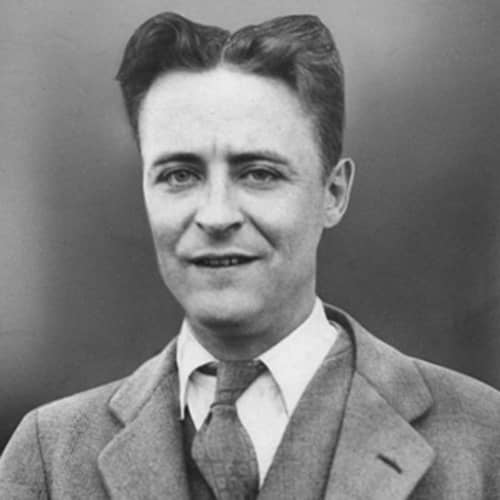
F. SCOTT FITZGERALD is widely regarded as one of the greatest American writers of the 20th century. The Great Gatsby (1925), his most well-known work, is revered as an American classic and remains one of the most frequently taught novels today.
Born in Saint Paul, Minnesota in 1896, Fitzgerald first moved to at the age of 2. In 1901, his family moved to Syracuse but returned to Buffalo a short time later and remained until 1908. During those early years, the Fitzgerald family lived at various addresses including a boarding house in what is now known as the Lenox Hotel and a private residence on Highland Avenue. He attended Holy Angels Convent from 1903-1904 and Nardin Academy from 1905-1908.
During his schooling, it was revealed that Fitzgerald had an unusual level of intelligence and drive when it came to his interest in literature. In 1908, the family left Buffalo after his father was fired from Procter & Gamble. At the age of twelve, Fitzgerald returned to Minnesota.
Fitzgerald attended Princeton University but dropped out in 1917 to join the U.S. Army. He was assigned to active duty and just before he shipped off, he grew afraid of dying in World War I with his literary dreams yet to come true. Because of this, he wrote The Romantic Egotist in a rush before he left to report for duty. It was rejected by Scribners, but one critic encouraged him to continue to write, and so he did.
While stationed in Alabama, Fitzgerald met and fell in love with Zelda Sayre. His desire to marry her further propelled his desire to succeed as a writer. He rewrote his manuscript and published it as This Side of Paradise (1920) at the age of twenty-four; its success catapulted him to overnight literary fame.
The love affair and escapades of Scott and Zelda is the stuff of legend. They traveled throughout France and partied with a veritable Who’s Who of the Jazz Age artists and musicians. It was during this period that Fitzgerald was writing The Great Gatsby.
Other works include his novel, Tender is the Night (1934) and numerous short stories such as The Curious Case of Benjamin Button. (1921) and Winter Dreams (1922).
Fitzgerald made multiple attempts as a Hollywood screenwriter in the 1930s and earned good money—particularly during the Depression years—but managed his finances poorly. Fitzgerald died in 1940 of a heart attack, convinced that he was a failure.
Learn more at the F. Scott Fitzgerald Society
About The Great Gatsby
One of the great classics of twentieth-century literature, The Great Gatsby, F. Scott Fitzgerald’s third book, stands as the supreme achievement of his career. This exemplary novel of the Jazz Age has been acclaimed by generations of readers. The story of the fabulously wealthy Jay Gatsby and his love for the beautiful Daisy Buchanan, of lavish parties on Long Island at a time when The New York Times noted gin was the national drink and sex the national obsession, it is an exquisitely crafted tale of America in the 1920s.
Emanuel ``Manny`` Fried | Playwright, Actor, Union Organizer | Most Dangerous Man
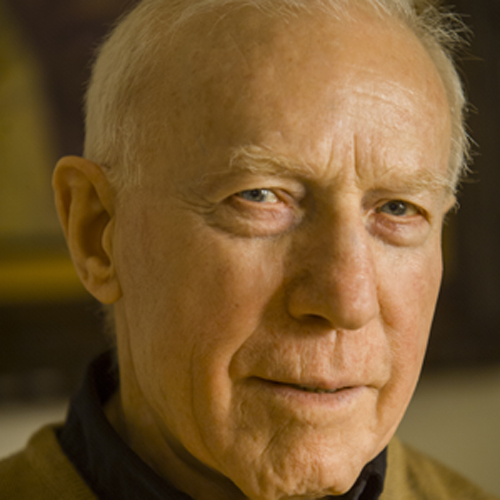
EMANUEL “MANNY” FRIED was a playwright, actor, and union organizer who is most celebrated for standing up to McCarthyism and his depictions of the working class in his plays.
Born in 1913 in Brooklyn, Fried’s family moved to Buffalo when he was a young boy. Emanuel— known affectionately as “Manny”—wrote his first play at the age of 14, inspired by the colorful figures he encountered while working as a bellhop at downtown hotels. After graduating from Hutchinson-Central high school, Manny attended the University of Iowa on a football scholarship but left Iowa after his first year.
During World War II, Fried served with the 20th Infantry in the Pacific Theater before returning to Buffalo as the director of the Buffalo Contemporary Theater where he met his wife, Rhoda Lurie.
Fried appeared before the House Un-American Activities Committee in 1954 and again in 1964, and was subsequently blacklisted for his refusal to provide names of suspected communists. Prevented from working in the U.S., Fried worked for 15 years for Canada Life, an insurance company, and continued to write plays throughout this time.
Fried eventually returned to school, earning his bachelor’s and Ph.D. from Buffalo State College. In 1972, he joined the faculty at Buffalo State College. Though he officially retired in 1983, he continued to teach as an adjunct lecturer until 2008.
Some of his most well-known plays include Dodo Bird, Drop Hammer, Elegy for Stanley Gorski, and Boilermakers and Martinis.
A much-beloved member of the Buffalo writing and theater communities, Fried was awarded the Literary Legacy Award by Just Buffalo Literary Center in honor of his lifetime achievement. And, in 2008, the Subversive Theater Collective christened their space the Manny Fried Playhouse in his honor.
Manny Fried died on February 25, 2011 at the age of 97.
Read his The Buffalo News obituary (reprinted in The Nation)
About Most Dangerous Man, a Personal Memoir
Reflections from a long life of activism, conflict and creativity, by veteran labor organizer and author Emanuel Fried, of Buffalo, New York. Recounted here are his modest family origins, marriage into an upper class family, dramatic encounters in his experiences in various factories and union campaigns, as well as his relations with theater and cinema personalities of the 1930s. Several decades of harassment by the FBI, the local press, and clerical fascists are vividly recalled, with profound lessons for future activists and organizers.
Eric Gansworth | Writer, Visual Artist | If I Ever Get Out of Here
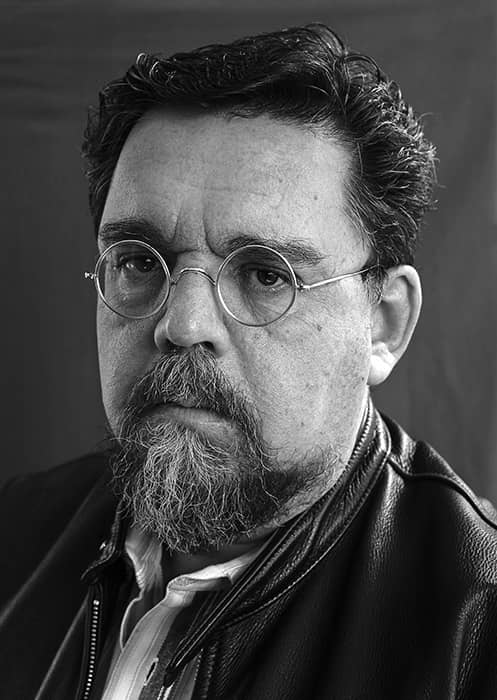
ERIC GANSWORTH (Eel Clan, Onondaga) was born and raised at the Tuscarora Nation. A writer and visual artist, Gansworth includes paintings in each of his books and often includes text with his visual art work. He is Lowery Writer-in-Residence at Canisius College in Buffalo, NY, and he has been an NEH Distinguished Visiting Professor at Colgate University.
His tenth book, If I Ever Get Out of Here, a young adult novel, was published in 2013, and he recorded the audiobook in 2014. It received an American Indian Youth Literary Honor Award, was on the Horn Book Summer Reading List, and was a feature book selected by the First Nations Development Institute. His books include the novels, Extra Indians (American Book Award, NAIBA Trade Book of the Year), and Mending Skins (PEN Oakland Award) and the poetry collection, A Half-Life of Cardio-pulmonary Function (National Book Critics Circle “Good Reads” List). His play, Re-Creation Story was selected for the Public Theater’s Native Theater Festival, in NYC, and he has had other theater/performance commissions at Ohio Northern University, and SUNY Oneonta.
In addition to numerous group shows, he has had solo visual art exhibits at Colgate University, Niagara University, Bright Hill Center, SUNY Oneonta, among other art spaces. His work has appeared in Kenyon Review, Boston Review, Provincetown Arts, Shenandoah, among other periodicals and has been widely anthologized. His next YA novel is Give Me Some Truth.
About If I Ever Get Out of Here
Lewis “Shoe” Blake is used to the joys and difficulties of life on the Tuscarora Indian reservation in 1975: the joking, the Fireball games, the snow blowing through his roof. What he’s not used to is white people being nice to him—people like George Haddonfield, whose family recently moved to town with the Air Force. As the boys connect through their mutual passion for music, especially the Beatles, Lewis has to lie more and more to hide the reality of his family’s poverty from George. He also has to deal with the vicious Evan Reininger, who makes Lewis the special target of his wrath. But when everyone else is on Evan’s side, how can he be defeated? And if George finds out the truth about Lewis’s home—will he still be his friend?
Susan Howe | Poet, Author | My Emily Dickinson
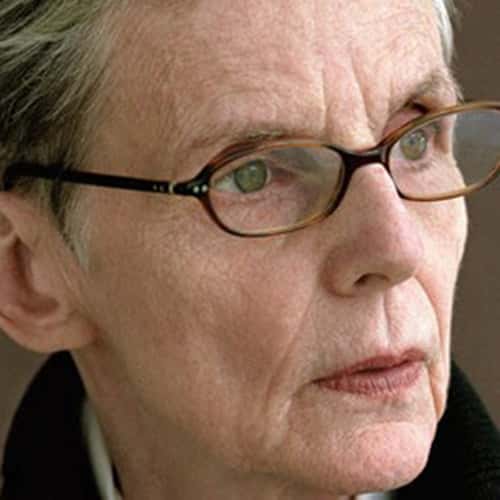
SUSAN HOWE, winner of the 2011 Bollingen Prize, is a preeminent and increasingly influential American poet, known for innovative writing that transcends genres with groundbreaking originality.
Born in Boston in 1937, young Susan moved to Park Street in the Allentown section of Buffalo when her father joined the faculty of the Law School at the University of Buffalo. Her seminal memories of Buffalo are dramatically captured in the opening poem of The Europe of Trusts (1990).
Though those years proved significant in Howe’s consciousness, the family did not stay long in Buffalo. When her father accepted a position at the Harvard Law School, they returned to Massachusetts where Susan remained until after high school. Deciding to pursue the theater instead of college (in part because of her mother, Mary Manning’s wishes for her), Howe spent two years in Ireland before returning to the U.S. to focus on visual art.
Howe graduated from the Boston Museum School of Fine Arts in 1961 where she majored in painting, creating visual collages which often included quotation or text. It was only a matter of time until the words in her paintings gradually became more and more interesting to her as she made the gradual transition from painter to poet.
These early forays into theater and painting inform the entirety of her written work. Howe’s poetry is dramatic in its use of the page as a canvas for text. The poetic voice is powerful in her numerous books of poems as well as her essays and volumes of criticism.
Early works include Hinge Picture (1974), Secret History of the Dividing Line (1978), The Liberties (1980), and Defenestration of Prague (1983). But it was her groundbreaking work of literary criticism, My Emily Dickinson (1985), which transformed both Howe’s career and the field of Emily Dickinson scholarship.
In 1989, Howe returned to the Buffalo of her childhood to join the English department at the University at Buffalo where she was one of the founders of the Poetics Program with Robert Creeley, Charles Bernstein and Dennis Tedlock. She held the Samuel P. Capen Chair of Poetry and the Humanities until her retirement in 2007.
Fascinated by the voices of history, Howe’s books circle around Puritan and New England figures, drawing inspiration from archival documents, letters, diaries, photographs, found texts, film, dictionaries, notebooks, philosophical writings and anything else which captures her fancy. From Cotton Mather and Anne Hutchinson to Herman Melville and Charles S. Pierce, Frederick Law Olmsted to Chris Marker, she digs deep into the past and creates works which are quintessentially Howe, consistently avant-garde for four decades and counting.
Other notable volumes of poetry include Singularities (1990), The Europe of Trusts: Selected Poems (1990), The Nonconformist’s Memorial (1993), Pierce-Arrow (1999), The Midnight (2003), and That This (2010).
Her books of criticism are The Birth-Mark: Unsettling the Wilderness in American Literary History (1993), which was named an “International Book of the Year” by the Times Literary Supplement; The Quarry (2015), and My Emily Dickinson, which was reprinted in 2016.
Howe is the recipient of two American Book Awards from the Before Columbus Foundation and a Guggenheim Fellowship. A Chancellor of the Academy of American Poets since 2000, Howe received Yale University’s Bollingen Prize in American Poetry in 2011. She lives in Guilford, Connecticut.
Learn more in The Paris Review
About My Emily Dickinson
“Starts off as a manifesto but becomes richer and more suggestive as it develops.”
—The New York Sun
With exacting rigor and wit, Howe pulls Dickinson free of all the sterile and stuffy belle-of-Amherst cotton wool and shows the poet in touch with elemental forces of nature, and as a prophet in all her radical zealotry and poetic glory. Her Emily Dickinson is a unique American genius, a demon lover of poetry―no neurasthenic spider artist. Howe draws into her discussion Browning, Wuthering Heights, the Civil War, “Master,” the great Puritan preachers, captivity narratives, Shakespeare, and phantom lovers. As she chases away narrow and reductive feminist readings of the poet, Howe finds instead a radically powerful and true feminism at work in Dickinson, focusing the whole on that heart-stopping poem “My Life had stood―a Loaded Gun.”
A remarkable and passionate poet-on-poet engagement, My Emily Dickinson frees a great poet from the fetters of being read as a special female neurotic, and sets her against a fiery open sky where “Perception of an object means loosing and losing it . . . only Mutability certain.” My Emily Dickinson won the Before Columbus Foundation Book Award.
Joyce Carol Oates | Author, Poet, Playwright | them
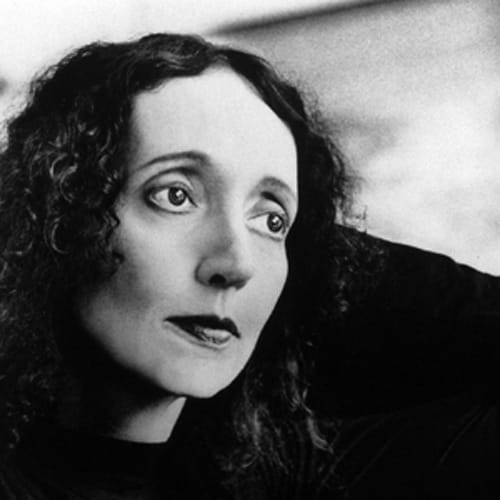
JOYCE CAROL OATES is the author of a stunning body of work which spans more than 100 books. Known primarily as a novelist, Oates has also written over thirty collections of short stories, eight volumes of poetry, and numerous plays, essays, book reviews, and non-fiction works.
The recipient of the National Book Award, two O. Henry Awards, and the National Humanities Medal from President Barack Obama, Joyce Carol Oates remains one of the most read and deeply revered among contemporary American writers.
Her novels Black Water (1992), What I Lived For (1994), Blonde (2000), as well as her short story collections The Wheel of Love and Other Stories (1970) and Lovely, Dark, Deep: Stories (2014), were each nominated for the Pulitzer Prize.
Born in 1938, Oates grew up on Millersport Road in Lockport, NY. She graduated as valedictorian from Syracuse University before earning her M.A. from the University of Wisconsin. Oates began her teaching career at the University of Windsor in Canada (1968-1978) before joining the faculty at Princeton University’s creative writing program where she taught from 1978 until 2013.
From A Reader’s Guide to the Recent Novels of Joyce Carol Oates (1996):
Joyce Carol Oates has often expressed an intense nostalgia for the time and place of her childhood, and her working-class upbringing is lovingly recalled in much of her fiction. Yet she has also admitted that the rural, rough-and-tumble surroundings of her early years involved “a daily scramble for existence.” Growing up in the countryside outside of Lockport, New York, she attended a one-room schoolhouse in the elementary grades. As a small child, she told stories instinctively by way of drawing and painting before learning how to write. After receiving the gift of a typewriter at age fourteen, she began consciously training herself, “writing novel after novel” throughout high school and college.
Success came early: while attending Syracuse University on scholarship, she won the coveted Mademoiselle fiction contest. After graduating as valedictorian, she earned an M.A. in English at the University of Wisconsin, where she met and married Raymond J. Smith after a three-month courtship; in 1962, the couple settled in Detroit, a city whose erupting social tensions suggested to Oates a microcosm of the violent American reality. Her finest early novel, them, along with a steady stream of other novels and short stories, grew out of her Detroit experience. “Detroit, my ‘great’ subject,” she has written, “made me the person I am, consequently the writer I am—for better or worse.”
Between 1968 and 1978, Oates taught at the University of Windsor in Canada, just across the Detroit river. During this immensely productive decade, she published new books at the rate of two or three per year, all the while maintaining a full-time academic career. Though still in her thirties, Oates had become one of the most respected and honored writers in the United States. Asked repeatedly how she managed to produce so much excellent work in a wide variety of genres, she gave variations of the same basic answer, telling the New York Times in 1975 that “I have always lived a very conventional life of moderation, absolutely regular hours, nothing exotic, no need, even, to organize my time.” When a reporter labeled her a “workaholic,” she replied, “I am not conscious of working especially hard, or of ‘working’ at all. Writing and teaching have always been, for me, so richly rewarding that I don’t think of them as work in the usual sense of the word.”
In 1978, Oates moved to Princeton, New Jersey, where she continues to teach in Princeton University’s creative writing program; she and her late husband Raymond J. Smith operated a small press and published a literary magazine, The Ontario Review. Shortly after arriving in Princeton, Oates began writing Bellefleur, the first in a series of ambitious Gothic novels that simultaneously reworked established literary genres and reimagined large swaths of American history. Published in the early 1980s, these novels marked a departure from the psychological realism of her earlier work. But Oates returned powerfully to the realistic mode with ambitious family chronicles (You Must Remember This, Because It Is Bitter and Because It Is My Heart), novels of female experience (Solstice, Marya : A Life), and even a series of pseudonymous suspense novels (published under the name “Rosamond Smith”) that again represented a playful experiment with literary genre. As novelist John Barth once remarked, “Joyce Carol Oates writes all over the aesthetical map.”
The dramatic trajectory of Oates’s career, especially her amazing rise from an economically straitened childhood to her current position as one of the world’s most eminent authors, suggests a feminist, literary version of the mythic pursuit and achievement of the American dream. Yet for all her success and fame, Oates’s daily routine of teaching and writing has changed very little, and her commitment to literature as a transcendent human activity remains steadfast. Not surprisingly, a quotation from that other prolific American writer, Henry James, is affixed to the bulletin board over her desk, and perhaps best expresses her own ultimate view of her life and writing: “We work in the dark—we do what we can—we give what we have. Our doubt is our passion, and our passion is our task. The rest is the madness of art.”
—Greg Johnson
2016 portrait of Joyce Carol Oates in The Guardian
CelestialTimepiece.com (a website dedicated to all things Joyce Carol Oates)
About them
Joyce Carol Oates’s “Wonderland Quartet” comprises four remarkable novels that explore social class in America and the inner lives of young Americans. As powerful and relevant today as it on its initial publication, them chronicles the tumultuous lives of a family living on the edge of ruin in the Detroit slums, from the 1930s to the 1967 race riots. Praised by The Nation for her “potent, life-gripping imagination,” Oates traces the aspirations and struggles of Loretta Wendall, a dreamy young mother who is filled with regret by the age of sixteen, and the subsequent destinies of her children, Maureen and Jules, who must fight to survive in a world of violence and danger.
Winner of the National Book Award, them is an enthralling novel about love, class, race, and the inhumanity of urban life. It is, raves The New York Times, “a superbly accomplished vision.”
Them is the third novel in the Wonderland Quartet. The books that complete this acclaimed series, A Garden of Earthly Delights, Expensive People, and Wonderland, are also available from the Modern Library.
Ishmael Reed | Poet, Novelist, Essayist, Songwriter, Playwright | Mumbo Jumbo
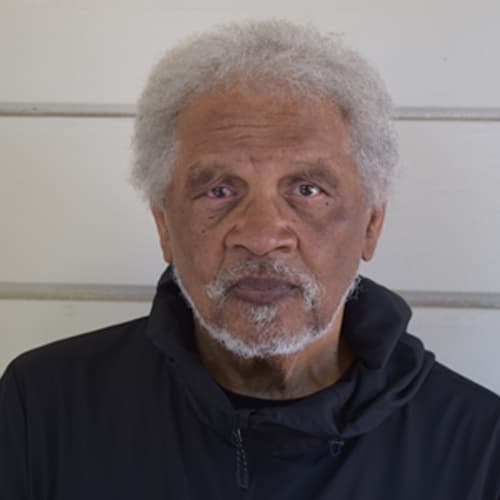
ISHMAEL REED is a poet, novelist, essayist, songwriter, playwright, editor and publisher, who is known for his satirical works challenging American political culture, and highlighting political and cultural oppression.
The author of more than 20 books, Reed’s groundbreaking book, Mumbo Jumbo (1972), was one of the first critically acclaimed works to define the African American canon. Reed’s newest poetry collection is Barack Obama and the Jim Crow Media: The Return of the Nigger Breakers (2010).
Born on February 22, 1938 in Chattanooga, Tennessee, Ishmael Reed moved to Buffalo at the age of four with his mother, Thelma Reed, and stepfather. Attempting to escape the segregation of the South, they hoped that Buffalo would offer new possibilities.
Upon arriving, they first lived on Potter Street, in a rooming house with Ishmael’s cousins while the Willert Park housing projects were being built. A year later, they moved in and young Ishmael was enrolled in school 75. An inquisitive child, his early school experiences were not exactly positive—most teachers labeled him a troublemaker, objecting to everything from his questions to the intensity of his stare, and from first through seventh grade, he would only have the one African American teacher: Hortense Nash.
In 7th grade, his stepfather got a job at the East Delavan Chevrolet plant and the family moved. Reed’s artistic interests were already taking shape. At 13, he played violin and trombone and even wrote a regular newspaper column on jazz for the Empire Star Weekly—the African American newspaper at that time.
A recipient of MacArthur, Guggenheim, and NEA fellowships, Reed taught for 35 years at the University of California—Berkeley and also created the Before Columbus Foundation which promotes multicultural writing in America and presents the American Book Awards.
In 2013, Just Buffalo Literary Center recongized Reed’s lifetime achievements as a writer by honoring him with the Literary Legacy Award.
Ishmael Reed at the National Poetry Foundation
About Mumbo Jumbo
A classic freewheeling look at race relations through the ages, Mumbo Jumbo is Ishmael Reed’s brilliantly satiric deconstruction of Western civilization, a racy and uproarious commentary on our society. In it, Reed, one of our preeminent African-American authors, mixes portraits of historical figures and fictional characters with sound bites on subjects ranging from ragtime to Greek philosophy. Cited by literary critic Harold Bloom as one of the five hundred most significant books in the Western canon, Mumbo Jumbo is a trenchant and often biting look at black-white relations throughout history, from a keen observer of our culture.
Mark Twain | Writer, Entrepreneur, Publisher, Lecturer | Adventures of Huckleberry Finn
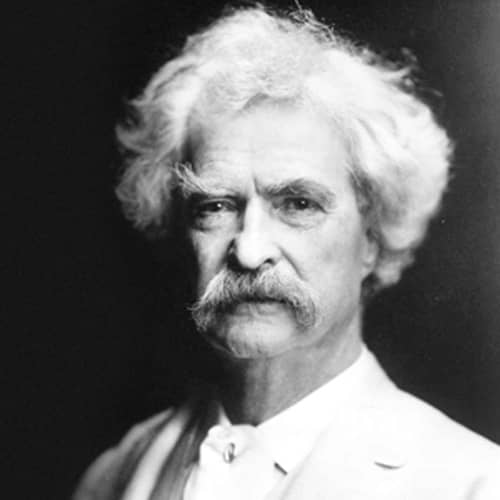
MARK TWAIN (Samuel Clemens) was an American writer, entrepreneur, publisher and lecturer. Among his novels are The Adventures of Tom Sawyer (1876) and its sequel, Adventures of Huckleberry Finn (1885), the latter often called “The Great American Novel.”
Samuel Clemens was born on November 30‚ 1835 in Florida‚ Missouri‚ the sixth of seven children. At the age of 4‚ Sam and his family moved to the small frontier town of Hannibal‚ Missouri‚ on the banks of the Mississippi River. Missouri‚ at the time‚ was a fairly new state (it had gained statehood in 1821) and comprised part of the country’s western border. It was also a slave state. Sam’s father owned one slave and his uncle owned several. In fact‚ it was on his uncle’s farm that Sam spent many boyhood summers playing in the slave quarters‚ listening to tall tales and the slave spirituals that he would enjoy throughout his life.
In 1847‚ when Sam was 11‚ his father died. Shortly thereafter he left school‚ having completed the fifth grade‚ to work as a printer’s apprentice for a local newspaper. His job was to arrange the type for each of the newspaper’s stories‚ allowing Sam to read the news of the world while completing his work.
It was the newspaper business which brought Clemens to Buffalo. After courting for two years‚ Sam Clemens and Olivia (Livy) Langdon were married in 1870. They settled in Buffalo‚ New York‚ where Sam had become a partner‚ editor and writer for the daily newspaper the Buffalo Express. While living in Buffalo‚ their first child‚ Langdon Clemens‚ was born.
Mark Twain lived less than two years in Buffalo at 472 Delaware Avenue, one of Buffalo’s most famous streets, just north of downtown. The house was demolished almost 100 years after it was built.
From BuffaloAH.com:
Mark Twain lived in Buffalo from 1869-1871. His time here was significant and worthy of recognition as it shaped him as a writer and as a person.
His time in Buffalo was the longest period that Twain had lived in one place since early childhood and the city was a place of firsts for him. Buffalo was the first place he lived as a married man, the birthplace of his first child, the first place he owned a home and the first place that he became co-owner of a newspaper.
While Twain’s stay in Buffalo was difficult personally, it spurred a time of great productivity. During his tenure here, his father-in-law, Jevis Langdon, suffered from cancer and his wife, Olivia, became dangerously ill with Typhoid.
A collection of his writings from this traumatic period is titled Mark Twain at The Buffalo Express: Articles and Sketches by America’s Favorite Humorist (Northern Illinois University Press; 1999).
The Express
In Western New York, Twain sharpened his writing abilities as editor of The Buffalo Express newspaper. His co-editor at The Express was Joseph Larned, with whom he often collaborated on articles and columns. Larned, a lifelong friend to Twain, subsequently became director of the library in Buffalo in 1877.
Another co-editor at The Express and close friend to Twain, David Gray was a well-known poet and long-standing member of the Buffalo Library board. In Twain fashion, he honored his friend by naming the central character in “A Murder, a Mystery and a Marriage” after Gray. The Gray Chair of Letters at the State University of New York at Buffalo was founded in his honor.
The Mark Twain Room at the Downtown Central Library of the Buffalo & Erie County Public Library
Tom Reigstad’s book, Scribblin’ for a Livin’: Mark Twain’s Pivotal Period in Buffalo
About Adventures of Huckleberry Finn
Larned and Gray were not the only Express contributors involved with Buffalo’s library. Twain was an active member of the Buffalo and Erie County Public Library’s predecessor, the Young Men’s Association and honored the Library with the manuscript of what is viewed by many as the greatest American novel. In 1885, Twain donated the second half of his Adventures of Huckleberry Finn manuscript, believing the first half had been lost by a printer.
In 1991, the missing manuscript turned up in a steamer trunk in a Los Angeles home. It was among the possessions of James Fraser Gluck, the lawyer for the Buffalo Library who had requested the manuscript from Twain a century earlier. Twain eventually mailed the missing half of the manuscript, but Gluck, who had apparently taken it home to have it bound, died with it among his belongings in 1897. After gaining possession, the Buffalo & Erie County Public Library united the manuscript in 1992 for the first time in more than 100 years and showcases this cultural treasure in its Mark Twain Room with a special collection of Huckleberry Finn editions, Twain writings and other memorabilia.
Referring to Adventures of Huckleberry Finn, H. L. Mencken noted that his discovery of this classic American novel was “the most stupendous event of my whole life”; Ernest Hemingway declared that “all modern American literature stems from this one book,” while T. S. Eliot called Huck “one of the permanent symbolic figures of fiction, not unworthy to take a place with Ulysses, Faust, Don Quixote, Don Juan, Hamlet.”
The novel’s preeminence derives from its wonderfully imaginative re-creation of boyhood adventures along the Mississippi River, its inspired characterization, the author’s remarkable ear for dialogue, and the book’s understated development of serious underlying themes: “natural” man versus “civilized” society, the evils of slavery, the innate value and dignity of human beings, and other topics. Most of all, Huckleberry Finn is a wonderful story, filled with high adventure and unforgettable characters.



